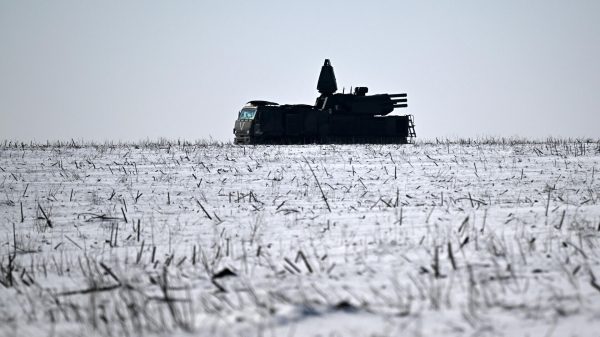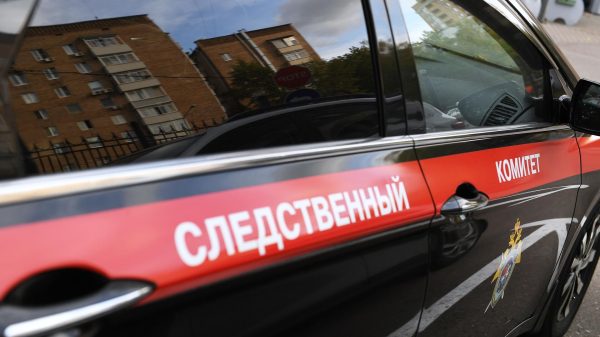
Young soldiers take to TikTok in threatening videos
The young soldiers in the video clip line the benches of their truck with machetes tucked under their arms. Some crowd over a single mobile phone, cigarette in hand. Others lean on their hoe. “We don’t hold a gun any more," a line of Burmese script reads underneath, in reference to the blunt farm tools littered on the bed of the vehicle.
The message is clear: we don’t just shoot, we bury too.
In another video a young soldier reaches for a machine gun, pulls it towards his face and kisses it before fixing his gaze at his smartphone camera with a tender smile. Meanwhile, a separate clip shows a young soldier drawing his fingers across his throat menacingly for his social media followers.
For those trying to make sense of the arbitrary street shootings that have become a daily occurrence in Myanmar’s bloody standoff between pro-democracy protesters and the military junta, the chilling images may offer some clues.
Circulated widely on TikTok before they were taken down, the videos are part of a trend of what appear to be serving young officers glorifying the brutal violence they mete out on their peers with frightening abandon.
Myanmar’s current bout of violence is nothing new.
Many of the young soldiers wielding powerful automatic weapons have been plucked from the battlegrounds of ethnic insurgencies and transplanted into urban environments, according to new research.
The military units now active in the metropolitan centres include light infantry divisions who have been implicated in some of the worst brutality in the country’s recent history, experts have identified.
Unit 33, just one of the divisions, has already been linked to crimes against humanity during a crackdown on the Rohingya Muslim minority in Rakhine State in 2017.
Caught off guard by the magnitude of the backlash against them, the generals who launched Myanmar’s recent coup are deploying these shock troops to terrorise the population through arbitrary detention, vicious beatings, night raids and the threat of being shot dead at rallies.
Among the most horrific tactics is the practice of singling out protesters at crowded rallies to shoot in the head.
The first such killing – of Mya Thwe Thwe Khaing, 19, who was suddenly felled by a bullet that sliced through her bike helmet as she took cover from water cannons – stunned the nation.
Social media is now flooded with the gut-churning evidence of regular catastrophic head traumas inflicted by live fire.
Lin Htet, a 19-year-old geology student, was one of the latest victims killed at a protest in the former royal capital of Mandalay on Friday. Before the rally his father had pleaded with him: “Son, don’t go. So many people are dying.”
He was later filmed lying on the street as soldiers appeared to coerce a bystander into saying he died from biting his tongue. The military have reportedly refused to release his body to his family.
“It’s basically using brutal counterinsurgency tactics which see the civilian population as the target,” said Richard Horsey, a Myanmar-based analyst with the International Crisis Group. The general population is now the “enemy.”
The units focused on sowing fear on the streets to break the spirit of demonstrators, he added. At least another three people were killed on Friday, including a 21-year-old, taking the total death toll over 70.

A woman cries near a portrait of Lin Htet, who was killed in an anti-coup protest and his body was taken by military, March 12
Credit: Reuters
Amnesty International has identified a variety of military firearms being used to quell peaceful demonstrations, including Chinese RPD light machine guns, as well as local MA-S sniper rifles, MA-1 semi-automatic rifles, Uzi-replica BA-93 and BA-94 submachine guns, that go far beyond the limits of crowd control.
People killed by “well aimed, targeted shots” were not necessarily on the protest frontlines, with the aim of thinning out the tenacious crowds, explained Mr Horsey.
“They are trying to do what snipers do in combat situations, which is instill fear in the enemy by making death random and unpredictable and from an unseen location,” he said.
Entire neighbourhoods are being traumatised by night raids as troops swarm streets, waking residents with flash bangs, slight shots and random gunfire. “People are being dragged out in the middle of the night, kids and parents and lined up in the streets and threatened at gunpoint,” he said.
On Monday, the Sanchaung area in the commercial capital Yangon, was sealed off after dark as troops threatened to enter homes to search for demonstrators.
The crisis was averted when foreign diplomats raised the alarm.
More than 2,000 have been arrested, charged or sentenced since Feb 1.
Among them was U Khin Maung Latt, an official from ousted leader Aung San Suu Kyi’s National League for Democracy party [NLD], who died in custody, allegedly beaten during interrogation.
One protester who was detained in Myeik, a southern coastal town, described how he was beaten black and blue with belts, chains, bamboo sticks and batons. He and others were escorted into detention by troops who said: “This is the hell room, why don’t you guys have a taste?”
The battle-hardened units are increasingly supplanting the traditional role of crowd control from the police, reportedly prompting hundreds of police officers to leave the force.
'I cannot shoot my own people': Myanmar police flee to India after refusing to kill protesters
Aung Ko Ko, a police officer who defected to join a snowballing civil disobedience movement confirmed the shoot-to-kill strategy in an interview with The Telegraph. He has now been forced into hiding with his family.
“They wanted us to shoot and arrest innocent people. People did nothing wrong so I can’t shoot them in cold blood,” he said.
"I joined the police to protect people and I want to wear a police uniform proudly,” he said, alleging that soldiers were swapping their own clothes for police uniforms before attacking people.
“It seems like soldiers are being brainwashed that human rights are meaningless and nationalism is ok,” he explained. “That’s why they’ve become so cruel to people.”
Dave Eubank, leader of the Free Burma Rangers (FBR), a relief group operating on the frontlines of the country’s decades-long ethnic conflicts, described the military as “a brutalised, immoral force without much of a pretense of any law and order,” like “thugs, gangs let loose”.
The army had its own culture of inhumanity, he said, where uneducated low-ranking troops were fed misinformation that ethnic minorities were going to destroy the country, allowed to dehumanise communities and brutalise them with impunity out of a sense of hatred and superiority.
“The Burma military has been unleashed on the ethnics for decades and the switch to their own people is a very easy one,” he said.
On Thursday, Tom Andrews, the UN special envoy for human rights in Myanmar, said the junta’s violence likely meets the legal threshold for crimes against humanity.
Avinash Paliwal, associate professor of International Relations at SOAS University of London, said senior officers were equally desensitised to indiscriminate violence along with the lower ranks.
“If anything, they rely on it to remain in power. It’s the only tool they have at their disposal to assert control over an unaccepting populace,” he said.
“The whole institution knows that if they fall – they’ll fall hard. This sense of insecurity ends up fuelling violence against civilians.”
As Myanmar’s generals step up the pressure on an exhausted but determined population, the window for a negotiated outcome is closing, raising the likelihood of a more ominous outcome.
Coup leader, General Min Aung Hlaing, was capable of unleashing “multiple levels of greater violence,” warned Mr Horsey. “I think it’s almost inevitable that this situation will continue to escalate.”
The identities of the soldiers in the videos cannot be independently verified but TikTok said it was “aggressively removing content in Myanmar that violates our principles,” adding that “the promotion of hate and violence has absolutely no place on our platform”.





















































Свежие комментарии